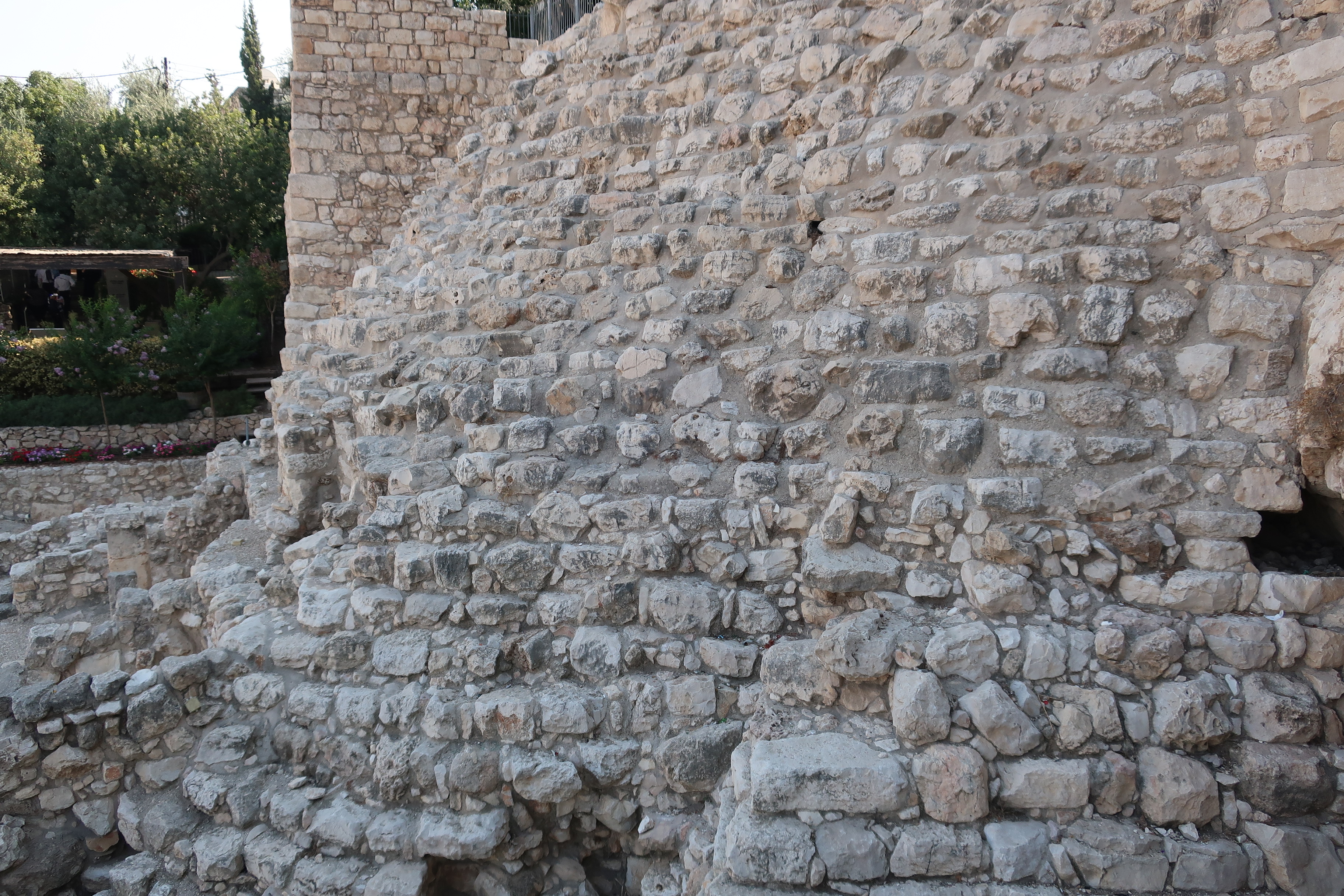Stepped Stone Structure on:
[Wikipedia]
[Google]
[Amazon]
 The Stepped Stone Structure is the name given to the remains at a particular archaeological site (sometimes termed Area G) on the eastern side of the
The Stepped Stone Structure is the name given to the remains at a particular archaeological site (sometimes termed Area G) on the eastern side of the
 It is hypothesized that the structure may be the Biblical Millo. A recent excavation by
It is hypothesized that the structure may be the Biblical Millo. A recent excavation by
 The Stepped Stone Structure is the name given to the remains at a particular archaeological site (sometimes termed Area G) on the eastern side of the
The Stepped Stone Structure is the name given to the remains at a particular archaeological site (sometimes termed Area G) on the eastern side of the City of David "City of David" is a biblical and religious epithet for the ancient city of Jerusalem.
It may also refer to:
* City of David (archaeological site) - an archaeological excavation associated with ancient Jerusalem
* Jerusalem Walls National Park
...
, the oldest part of Jerusalem
Jerusalem (; he, יְרוּשָׁלַיִם ; ar, القُدس ) (combining the Biblical and common usage Arabic names); grc, Ἱερουσαλήμ/Ἰεροσόλυμα, Hierousalḗm/Hierosóluma; hy, Երուսաղեմ, Erusałēm. i ...
. The curved, , narrow stone structure is built over a series of terraces (hence the name). A casemate
A casemate is a fortified gun emplacement or armored structure from which guns are fired, in a fortification, warship, or armoured fighting vehicle.Webster's New Collegiate Dictionary
When referring to antiquity, the term "casemate wall" me ...
wall adjoins the structure from a northerly direction at the upper levels, and may have been the original city wall.
Excavation and interpretation
Macalister, the first to excavate the structure in the 1920s, called the remains he had found a "ramp" and believed it to beJebusite
The Jebusites (; ISO 259-3 ''Ybusi'') were, according to the books of Joshua and Samuel from the Tanakh, a Canaanite tribe that inhabited Jerusalem, then called Jebus (Hebrew: ''Yəḇūs'', "trampled place") prior to the conquest initiated b ...
. Work continued in the 1960s with Kathleen Kenyon
Dame Kathleen Mary Kenyon, (5 January 1906 – 24 August 1978) was a British archaeologist of Neolithic culture in the Fertile Crescent. She led excavations of Tell es-Sultan, the site of ancient Jericho, from 1952 to 1958, and has been called ...
, who dated the structure to the start of Iron Age
The Iron Age is the final epoch of the three-age division of the prehistory and protohistory of humanity. It was preceded by the Stone Age ( Paleolithic, Mesolithic, Neolithic) and the Bronze Age ( Chalcolithic). The concept has been mostly ...
II (1000–900 BCE). Yigal Shiloh excavated in the 1970s–80s. After the discoveries by Kenyon and Shiloh, some scholars have suggested that the structure might be a retaining wall, or a fortress. Israel Finkelstein
Israel Finkelstein ( he, ישראל פינקלשטיין, born March 29, 1949) is an Israeli archaeologist, professor emeritus at Tel Aviv University and the head of the School of Archaeology and Maritime Cultures at the University of Haifa. Fin ...
''et al.'' propose and argue that the upper part of the structure was either built, or substantially rebuilt in the Hasmonean period.; p. 154 (archived from http://www.tau.ac.il/humanities/archaeology/info/TA34-2_King_David.pdf)
Millo
 It is hypothesized that the structure may be the Biblical Millo. A recent excavation by
It is hypothesized that the structure may be the Biblical Millo. A recent excavation by Eilat Mazar
Eilat Mazar ( he, אילת מזר; 10 September 195625 May 2021) was an Israeli archaeologist. She specialized in Jerusalem and Phoenician archaeology. She was also a key person in Biblical archaeology noted for her discovery of the Large Ston ...
directly above the Stepped Stone Structure shows that the structure connects with and supports the Large Stone Structure. Mazar's interpretation of the evidence yields her hypothesis that the Large Stone Structure was an Israelite royal palace in continuous use from the tenth century until 586 BCE. She motivates her conclusion that the stepped stone structure and the large stone structure are parts of a single, massive royal palace by citing the biblical reference to the House of Millo in as the place where King Joash was assassinated in 799 BCE while he slept in his bed. Millo is derived from "fill", (Hebrew ''milui''). The stepped stone support structure is built of fills.Mazar, Eilat, Excavations at the Summit of the City of David, Preliminary Report of Seasons 2005–2007, Shoham, Jerusalem and New York, 2009, p. 67.
See also
* Large Stone Structure * MilloReferences
Siloam Ancient sites in Jerusalem City of David {{Israel-geo-stub